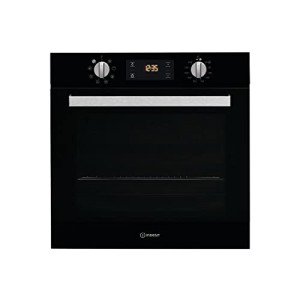Company Overview
-
Founded Date 31 de December de 1990
-
Categories Espetaria
Company Description
You’ll Never Guess This Single Built In Oven’s Secrets
The Comprehensive Guide to Single Built-In Ovens: Features, Benefits, and FAQs
Intro
In contemporary cooking areas, the combination of devices is key to accomplishing a structured style. Among these devices, the built-in oven stands out as a staple for daily cooking. In specific, single built-in ovens are getting appeal due to their space-saving style and performance. This article checks out the functions, benefits, and typically asked concerns about single built-in ovens, helping homeowners make notified choices.
What is a Single Built-In Oven?
A single built-in oven is a cooking device designed to be embedded within cabinets, supplying a seamless look that complements the kitchen’s visual. Unlike freestanding ovens, built-in variations provide a variety of functions and styles that accommodate contemporary cooking needs.
Key Features of a Single Built-In Oven
Single built-in ovens come with a variety of functions that improve functionality and user experience. Here are some of the most crucial qualities:

| Feature | Description |
|---|---|
| Size and Capacity | Typically ranges from 24 to 30 inches in width; suitable for various kitchen sizes. |
| Cooking Modes | Multiple settings, including convection, baking, broiling, and often steam cooking. |
| Controls | Digital touch controls or traditional knobs with accurate temperature level settings. |
| Self-Cleaning Options | Lots of designs include self-cleaning functions for simpler upkeep. |
| Energy Efficiency | Developed to consume less energy, frequently with an A+ energy score. |
| Safety Features | Consists of child locks, cooling systems, and temperature level sensors. |
| Style Options | Available in different finishes (stainless-steel, black, etc) and designs (modern-day, timeless). |
Benefits of Using a Single Built-In Oven
The adoption of Single Built In Oven built-in ovens offers various advantages:
- Aesthetics: They produce a modern and sleek appearance in the kitchen, blending effortlessly with cabinets.
- Space-Saving: Ideal for smaller sized kitchen areas, they are designed to optimize area by being built into walls or cabinets.
- Increased Functionality: Many models include advanced cooking innovation such as wise features that enable push-button control via smartphone.
- Easy to Use: With intuitive controls, built-in ovens are user-friendly and appropriate for both beginner and skilled cooks.
- Improved Cooking Performance: Convection designs flow hot air for even cooking results.
Popular Brands and Models
Several brands dominate the single built-in oven market, each offering special functions to deal with customer preferences. Here are some significant ones:
| Brand | Popular Models | Key Features |
|---|---|---|
| Bosch | HBN8451UC, HBL8453UC | European design, convection heat, Wi-Fi connectivity. |
| Electrolux | E30SO75GPS, E30SO75PPS | Variations in size, advanced barbecuing abilities. |
| Samsung | NV51K6650SG | Double convection, clever innovation, versatile cooking modes. |
| Whirlpool | WOS51EC0HS | Economical, reliable, self-cleaning features. |
| LG | LWS3063ST | Smart technology, air fry mode, smooth visual appeals. |
Setup Considerations
Installing a single built-in oven involves specific considerations:
- Measurement: Ensure that the area set aside is suitable with the oven’s measurements.
- Ventilation: Adequate air flow must be kept for safety and performance.
- Electrical Needs: Check voltage requirements and guarantee appropriate electrical outlets are readily available.
- Expert Installation: While some property owners might pick DIY, employing an expert can alleviate installation issues.
Regularly Asked Questions (FAQs)
-
How much area is required for a built-in oven?
- A built-in oven typically needs a designated area that varies by design, normally from 24 to 30 inches in width. Always refer to the manufacturer’s specifications for accurate measurements.
-
Can I set up a built-in oven by myself?
- While some may attempt a DIY setup, it is often suggested to employ a professional to make sure proper fitting, electrical connections, and ventilation.
-
Are single built-in ovens more pricey than freestanding designs?
- Normally, yes. Single built-in ovens tend to cost more due to their style, setup, and extra features.
-
What are the differences in between convection and regular ovens?
- Convection ovens have a fan that flows hot air throughout, leading to even cooking. Conventional ovens rely on glowing heat, which might result in locations and unequal cooking.
-
What maintenance is needed for a built-in oven?
- Routine cleansing, making sure vents stay unobstructed, and keeping track of functions. Many models provide self-cleaning choices, which streamline upkeep.
Single built-in ovens represent a convergence of design, benefit, and efficiency in modern kitchen areas. With a variety of functions and models available, these ovens deal with different cooking needs and preferences. Whether you are an aspiring chef or an occasional home cook, acquiring a well-suited single built-in oven can boost your cooking experience while raising your kitchen’s aesthetic. Careful consideration of features, setup requirements, and maintenance will lead to a rewarding financial investment in this essential kitchen home appliance.


